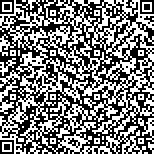| 摘要: |
| 根据2001年4月—2002年9月间对浙江北部沿海婆罗囊螺资源生态调查与实验生态观察、生物学特性研究、敏感药物选择与区域应用实验所获资料,以婆罗囊螺繁殖盛期优势群体与同时期滩涂养殖主要经济种类泥螺、彩虹明樱蛤优势群体间生态耐受特性比较为基础,通过建立基于利比希最小因子定律和谢尔福德耐受性定律基础之上的婆罗囊螺生态敏感因子确定方法,对婆罗囊螺生态敏感因子及其敏感度指数进行定量分析研究。结果表明,婆罗囊螺6h内温度、盐度及酸碱度的最大生态幅分别为0—40℃、5—65和3.92—9.5,最适生态幅分别为温度10—30℃、盐度17—35和酸碱度5.5—9.5;各实验动物对温度、盐度及酸碱度的生态敏感度指数分别为:婆罗囊螺呈酸碱度>温度>盐度,泥螺呈温度=盐度>酸碱度,彩虹明樱蛤则表现为温度≈酸碱度≈盐度;各实验生物间对温度、盐度及酸碱度生态敏感度指数分别表现为,温度呈彩虹明樱蛤≈婆罗囊螺>泥螺,盐度呈泥螺>彩虹明樱蛤≈婆罗囊螺,酸碱度呈婆罗囊螺>泥螺>彩虹明樱蛤。在讨论并设定酸碱度作为婆罗囊螺生态敏感因子的同时,为不影响涂泥底质安全,保证泥螺和彩虹明樱蛤的正常存活,确定酸碱度对婆罗囊螺的有效作用水平为9.5—10。 |
| 关键词: 婆罗囊螺,泥螺,彩虹明樱蛤,生态耐受性,生态敏感因子,浙江北部沿海 |
| DOI: |
| 分类号: |
| 基金项目:国家科技部星火计划项目资助,2003EA700104号;浙江省科技厅计划项目资助,21102058号;浙江省教育厅科研项目资助,20010659号;舟山市科技局科研项目资助,01224号 |
附件 |
|
| SELECTION OF ECOLOGICAL SENSITIVE FACTORS OF POLUO MUD SNAIL RETUSA BORNEENSIS IN NORTH OF ZHEJIANG COAST |
|
WANG Zhi-Zheng, SHI Hai-Dong, ZHANG Yi-Hao, YAN Shi-Qiang
|
|
Zhejiang Ocean University
|
| Abstract: |
| In past several years, scientist advanced their researches to quantitative analysis, digital modeling and other methods to evaluate environment of inhabitation and adaptation, and to assess enviIlonmenta1 factors in their roles of importance in ecology, especially in those polluted areas. However, most of such research were limited to regular tests on toxicity and no specific quantitative index, such as selective quantitative method of ecological sensitive factors, has been reported so far in China.
As it is known that the population density of poluo mud snail Retusa borneensis is much higher than other aquicultural seashell. The proportion has increased in north of Zhejiang Coast and become an important academic base for studying selection of inhibitor and the prevention of harmful species in tidal flat. This paper is the report of the ecological investigation for R.borneensis in north of Zhejiang coastal area from April 2001 to September 2002. Ecological differences in propagation, growth, behavior, inhabition, distribution and other characters of R.borneensis, mud slug Bullacta exarata and clam Moerella irdescens populations were studied. To research the ecological tolerance between dominance population of R.borneensis and other species such as B.exarata and M.irdescen during the eugenic period of R.borneensis 6 hours examinations were done. The ecological sensitive factors and the threshold value inhabiting to R.borneensis‘survival were selected. Result indicates that R.borneensis‘ecological tolerance range of temperature. salinity and pH is respectively 0—40℃, 5—65, 3. 92—9. 5, and the suitable range is respectively 10— 3O℃ , 17— 35 and 5. 5—9. 5 determined in 6 hours.
Based on the law of ecological tolerance, the result of investigation, and the consideration of the characteristic of aquacultural environment, this paper proposed a new formula to calculate Ecological Sensitive Degree Exponent(ESDE)index.
The value of ESDE is used to select ecological sensitive factor from all the ecological factors after the ecological investigation and ecological tests directed by the method. R.borneensis is more sensitive to pH value than to temperature and salinity, B.exarata is less sensitive to pH value than to temperature and salinity. But there are a slight difference in degree of the sensitiveness among the three factors for M.irdescen. The indexes of temperature, salinity an d pH value for each experimental species are presented as follows: for temperature, M.irdescen ≈ R.borneensis > B.exarata, for salinity, B.exarata > M.irdescen ≈ R.borneensis. and for pH value, R.borneensis > B.exarata > M.irdescen.
So the most sensitive environmental factor for R.borneensis is pH value, which showed a little sensitive to the main economic species such as B.exarata and M.irdescens in aquiculture. The suitable range of pH value is 9.5 to 10.0. The investigation also indicated that sunny day 1 to 2 hours after the ebb during period of R.borneensis breeding, R.borneensis and their eggs were more abundant, and the eggs are relatively small, so the group is easy to be interfered, and the surface of the mud beach shows drier. By this formula, we can restrain the quantity increasing of R.borneensis by rapidly changing the pH value of the environment. Results indicates that the method is suitable and the ESDE value can be used to select sensitive factors. |
| Key words: Poluo mud snail Retusa borneensis, Mud slug Bullacta exarata, Clam Moerella irdescens, Ecological tolerance, Ecological sensitive factors, North of Zhejiang Coast |
